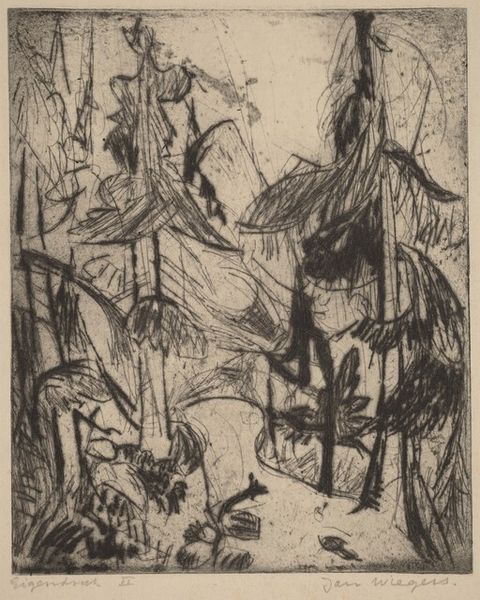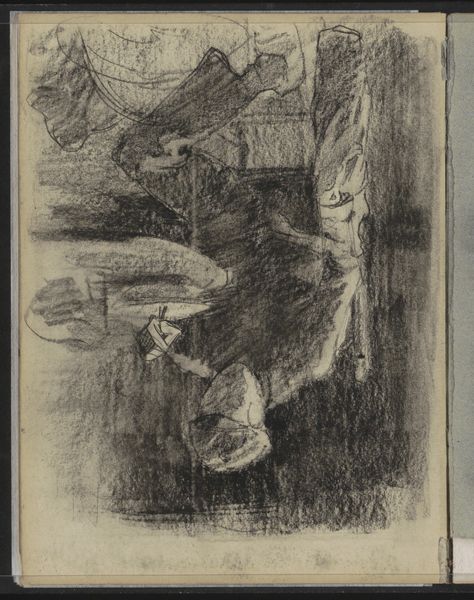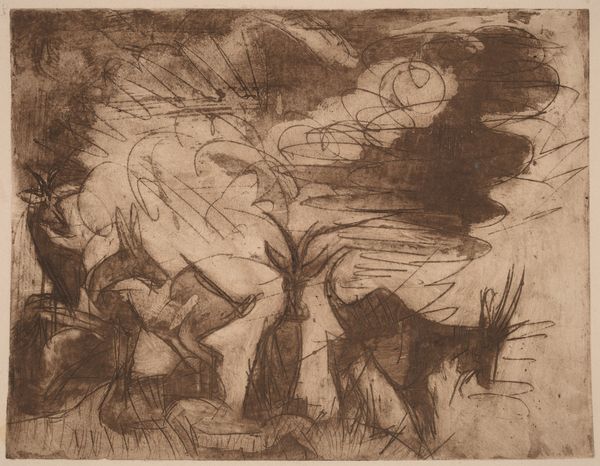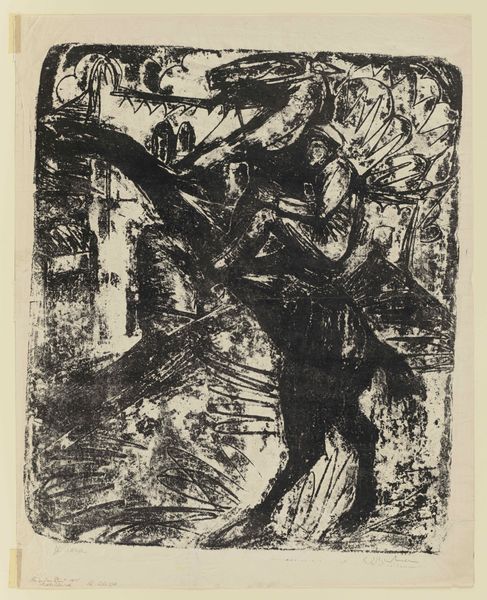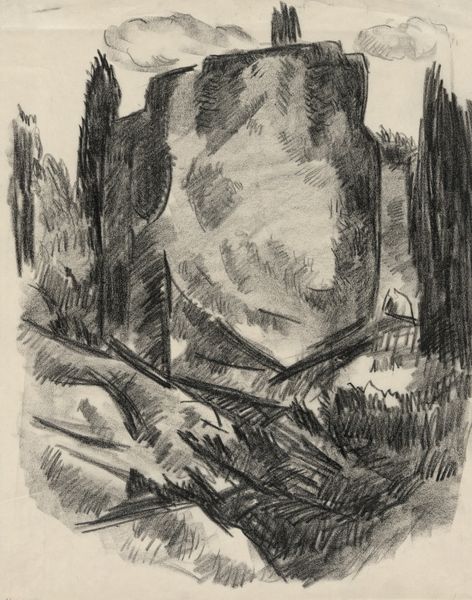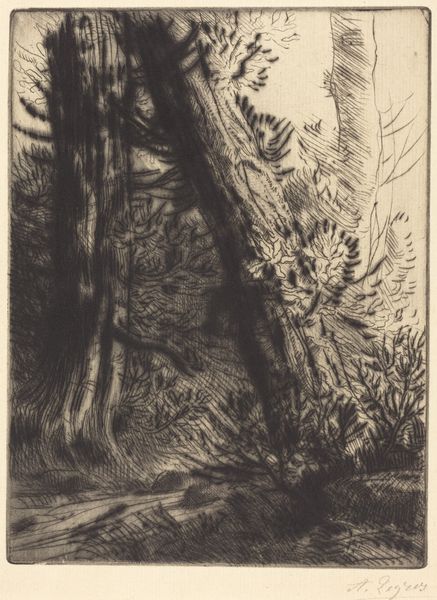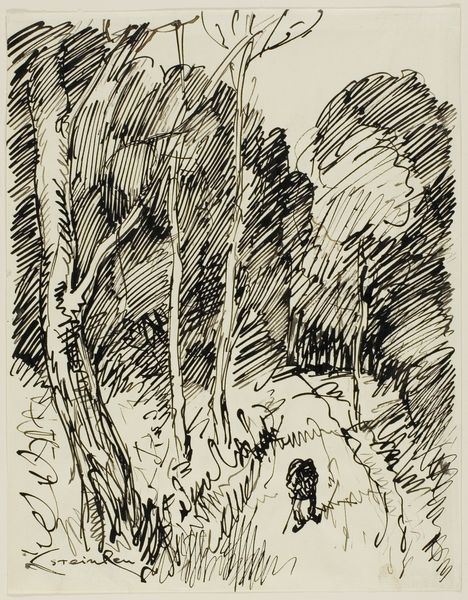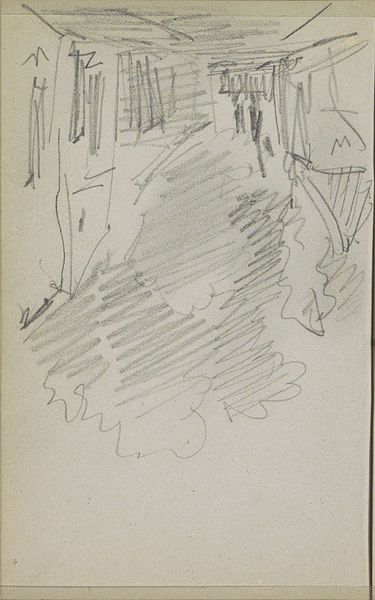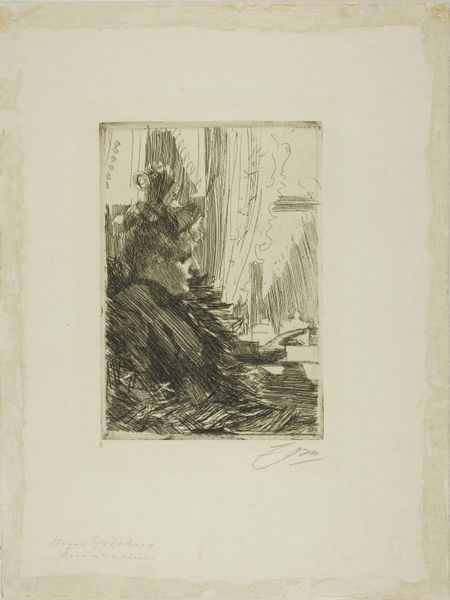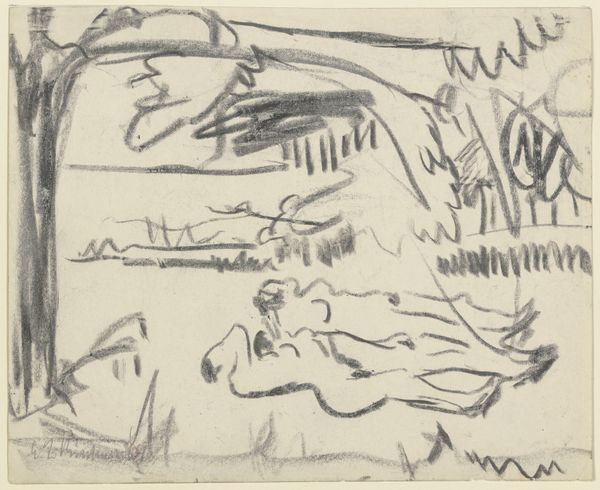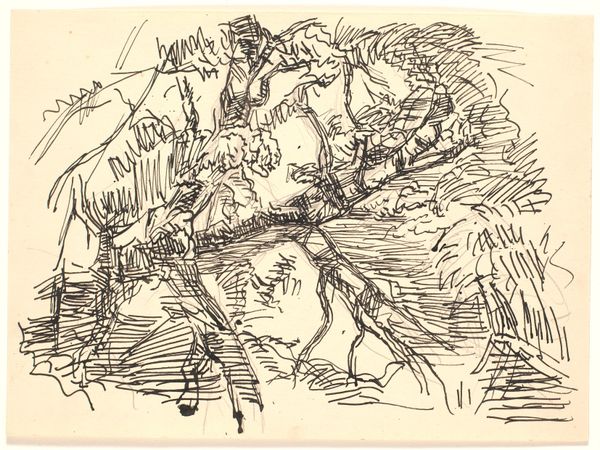
drawing, print, etching
#
drawing
#
ink drawing
# print
#
etching
#
landscape
#
expressionism
Dimensions: image: 28.2 × 25.08 cm (11 1/8 × 9 7/8 in.) sheet: 41.4 × 34.7 cm (16 5/16 × 13 11/16 in.) (irregular)
Copyright: National Gallery of Art: CC0 1.0
Editor: Here we have Ernst Ludwig Kirchner’s "The Seehorn," an etching from 1919. It's a black and white landscape, but the jagged lines and stark contrast give it such a restless feeling. It’s like the mountain itself is vibrating with anxiety. How do you interpret this work? Curator: Kirchner’s work during this period reflects the tumultuous aftermath of World War I. Think about the role of art during and after the war – did it comfort or provoke? Consider that he volunteered for military service but was discharged after a nervous breakdown. This etching, with its distorted landscape and frantic lines, reflects that personal trauma as well as broader societal anxieties. Do you notice how the mountain, instead of offering stability, seems to loom oppressively? Editor: I see what you mean. It’s not the serene mountain landscape you’d expect. The sharp angles are unsettling. The mountain dominates, almost threatening the viewer. Curator: Precisely! Now, look at how Expressionist artists like Kirchner sought to portray inner psychological states rather than objective reality. This print offers a window into the artist's own experience. Given that it was made in 1919, what societal tensions might be at play, informing Kirchner's anxieties and informing how his audience perceives this mountain? Editor: Post-war Germany was a mess—economically devastated, politically unstable. So, viewing the mountain as something looming and oppressive definitely fits into that historical context. Curator: Exactly. And seeing how art reflects personal turmoil and public mood, even in something seemingly straightforward like a landscape, makes it more compelling. Editor: I’ve never really considered the connection between personal experience, broad historical events, and artistic expression like that before. This etching definitely makes me rethink landscape art in general. Curator: That’s the beauty of looking at art through a historical lens; it reveals the complex dialogues between artist, artwork, and society.
Comments
No comments
Be the first to comment and join the conversation on the ultimate creative platform.

